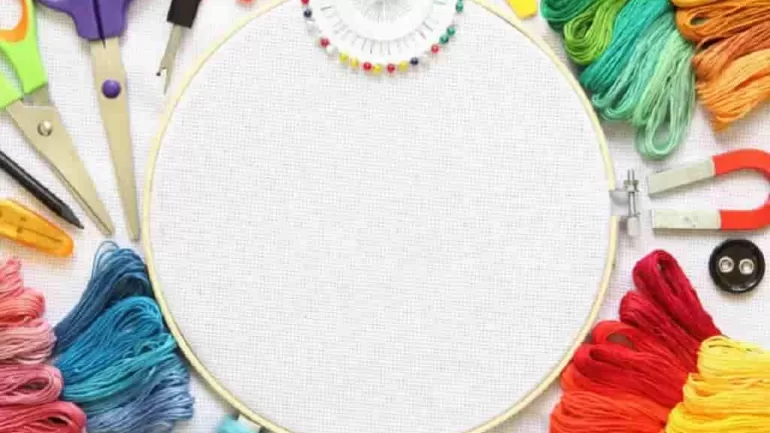ART & DESIGN
Sustainable Fabric Options for Your Next Embroidery Project
posted by Emma RadebaughReady to go green with your embroidery? Check out the top sustainable fabric options for your next embroidery project and create beautiful and eco-conscious designs.
BY EMMA RADEBOUGH, ARTCENTRON
Best Sustainable Fabric Options for Your Next Embroidery Project
The Many embroidery enthusiasts are seeking sustainable fabric options that align with their eco-friendly values as our environmental awareness grows. The textile industry is known for its substantial environmental impact; however, embroiderers can significantly reduce their carbon footprint by choosing sustainable fabrics. These fabric choices contribute to a healthier planet and offer high-quality materials that enhance the overall embroidery experience. Learn more about the top sustainable fabric options for your next embroidery project.
Organic Cotton
Organic cotton is a fantastic choice for those wanting to make environmentally conscious decisions in their embroidery projects. Most organic cotton suppliers grow their products without the use of harmful pesticides or synthetic fertilizers. This helps preserve biodiversity and support healthier ecosystems. Moreover, organic cotton farming often relies on rainwater rather than extensive irrigation systems, conserving vital water resources. The result is a softer, higher-quality fabric that embraces sustainability. Cotton is also a great option to use for your machine embroidery blanks while practicing designs.
Linen
Linen is another excellent sustainable fabric option for embroidery enthusiasts. From the fibers of the flax plant, linen fabric’s production involves minimal environmental impact due to its biodegradable nature and the low water and energy required to process it. Flax can grow in poor-quality soil and doesn’t need as many fertilizers or pesticides as other crops, making it an eco-friendly choice. Linen is durable, has a natural luster, and offers a unique texture that adds sophistication and strength to embroidery projects.
Hemp
Hemp stands out as a remarkable sustainable fabric choice for embroidery projects, gaining popularity for its robust performance and ethical credentials. From the Cannabis sativa plant, hemp fabric requires little to no pesticides and thrives in a variety of climates, making it highly sustainable. Hemp plants grow quickly, are naturally resistant to pests, and even enrich the soil with nitrogen. They offer environmental benefits beyond fabric production. The resulting textile is strong, long-lasting, and naturally resistant to mold and UV rays.
Wool
Wool is a timeless, sustainable fabric option farmers shear from sheep and is best for embroidery projects if you’re seeking quality and eco-friendliness. Sheep’s wool is a renewable and biodegradable material that boasts natural insulation properties, making it an excellent choice for projects needing warmth. The wool industry increasingly emphasizes animal welfare and environmentally responsible practices, such as using eco-friendly dyes and reducing water usage.
Bamboo
Bamboo is a versatile and sustainable option for embroidery enthusiasts seeking an eco-conscious fabric. An environmentally friendly crop, bamboo is popular for its rapid growth. It has minimal agricultural requirements and can regenerate quickly without the need for fertilizers or pesticides. The process of transforming bamboo into fabric involves breaking down the plant into pulp. Then, producers spin the pulp into fibers for textile creation. This produces a soft, breathable material that is durable and biodegradable.
These sustainable fabric options for your next embroidery project are just a few of the many eco-friendly choices available. By choosing sustainable fabrics, you contribute to a healthier planet and support ethical and responsible practices in the textile industry. So, next time you’re planning an embroidery project, consider incorporating these sustainable options into your fabric selection and create beautiful designs with added value for both yourself and the environment.
Will you be using any of these sustainable fabric options for your next embroidery project? Share your thoughts. Leave a comment.
Share this:
- Click to share on X (Opens in new window) X
- Click to share on Facebook (Opens in new window) Facebook
- Click to share on Reddit (Opens in new window) Reddit
- Click to share on Pinterest (Opens in new window) Pinterest
- Click to share on Tumblr (Opens in new window) Tumblr
- Click to share on Instagram (Opens in new window) Instagram
- Click to share on LinkedIn (Opens in new window) LinkedIn
- More
